What types of tobacco exist that do not require fermentation?
The cost and quality of cigarettes on the market leave much to be desired. Therefore, in search of the best, amateurs plant tobacco bushes on their plots.
But growing it is only half the battle. The product becomes suitable for smoking after special processing of the leaves - fermentation. What kind of process is this, why is it necessary and what tobacco does not need fermentation - read in our material.
What is tobacco fermentation and why is it needed?
Fermentation called the final stage of post-harvest processing of tobacco.
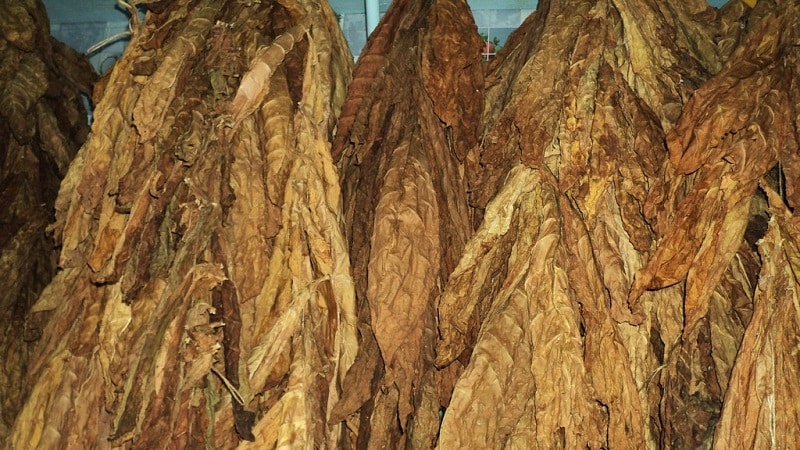
During this technological operation there is complex of chemical and biochemical reactions. Pectin substances, amino acids, and nicotine are partially destroyed. Melanoidins are formed, which color the fermented leaves in red-brown shades. High-quality transformations of resins and essential oils occur.
During fermentation, a number of changes occur in the tobacco leaf:
- the greenery remaining after drying disappears;
- the damp grassy smell changes to a characteristic tobacco smell;
- strength decreases;
- bitterness decreases to some extent;
- flammability increases;
- the aroma of smoke improves;
- technological properties are improved - moisture holding capacity is reduced, resistance to mold formation is increased, and the shelf life of raw materials is increased.
Fermentation conditions
The process occurs under the pressure of both the own weight of the bales and the use of devices.
Initially, fermentation was carried out at a temperature of 30–35 ° C and relative humidity 75%.The process took about 35 days. This regime provided good smoking properties of tobacco, but was economically ineffective.
At modern tobacco production enterprises fermentation mode is used at 50 ° C and humidity 50–60%. Advantages of this technology:
- reduction of processing time to 9–14 days while maintaining product quality;
- reduction of manifestations of individual properties of tobacco bales.
Preparing high-grade tobacco requires softer conditions. This is how raw materials with pronounced taste and aroma are obtained.
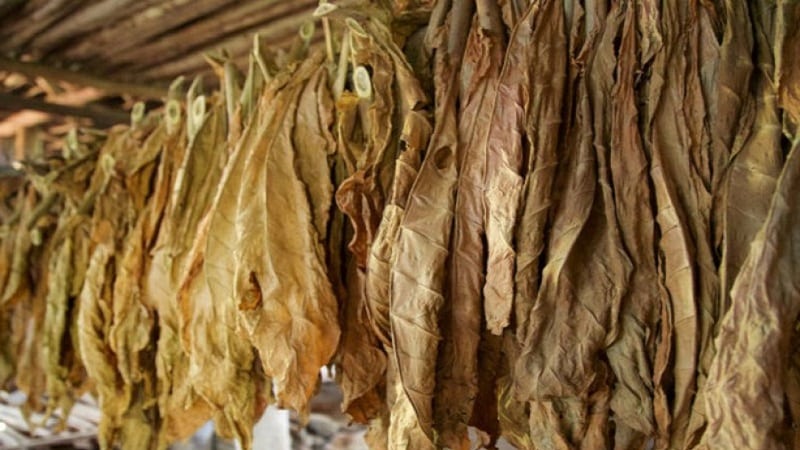
Kinds
There are several types of tobacco fermentation.
In the pylons
Tobacco sheets packed in bales, stacked in rows in high towers (pylons). Under pressure from the upper layers, the temperature rises in the lower layers and fermentation begins. When ready, the lower layers are removed, and new layers are laid on top of the pylon.
This is interesting:
Cavendish (Cavendish)
Tobacco is pre-soaked in a solution with flavorings, most often in sugar syrup, then dried and kept under pressure. To obtain another variety, the so-called Black Cavendish, aging under pressure is combined with heating or steaming. At the same time, the tobacco becomes black, which is incorrectly interpreted as an increase in strength.
Cavendish flavorings include ingredients of various origins, including fruit ones.
Cavendish is smoked pure, since it is made from basic varieties of tobacco (Virginia, Burley)
This is interesting! Cavendish is named after Captain Tom Cavendish.Once, while transporting cargo from North America, to save space on the ship, he placed tobacco in rum barrels. During the voyage, the leaves became saturated with alcohol residues and acquired a specific aroma and taste. In Europe, this tobacco quickly became popular.

Perique
After collecting and pre-drying, the leaves are placed in two-hundred-liter barrels and placed under a press without air access. Under pressure, juice begins to separate and ferment. Periodically, the leaves are removed from the barrels, turned over, and the process is repeated again. After a year, the tobacco becomes a rich chocolate color, acquires a sweet taste and aroma with notes of alcohol resulting from fermentation of the juice.
This is interesting! Perique is produced using tobacco grown in Louisiana along the Mississippi. Attempts to ferment varieties grown in other regions in this way have not been successful.
Perique contains a relatively high amount of nicotine and is never used on its own, only as a seasoning in mixtures.
Tobacco varieties that do not require fermentation
The tobacco fermentation process is complex and requires knowledge of technology and experience. For beginners, varieties that do not require this procedure will come to the rescue.
Tennessee Burley TN90 (Tennessee Burley TN90)
The variety comes from America, Tennessee.. The plant is high-yielding, annual, up to 120 cm in height. The leaves are smooth, pointed, up to 60 cm in size. The sugar content is low (no more than 0.8%), nicotine is average (1.5–2%).
The growing season is 140 days. The variety is grown only by seedlings. It is recommended to plant on sandy loam or light loamy soils with moderate watering. Feels good in the climatic conditions of central Russia.The bushes are resistant to tobacco mosaic virus and downy mildew.
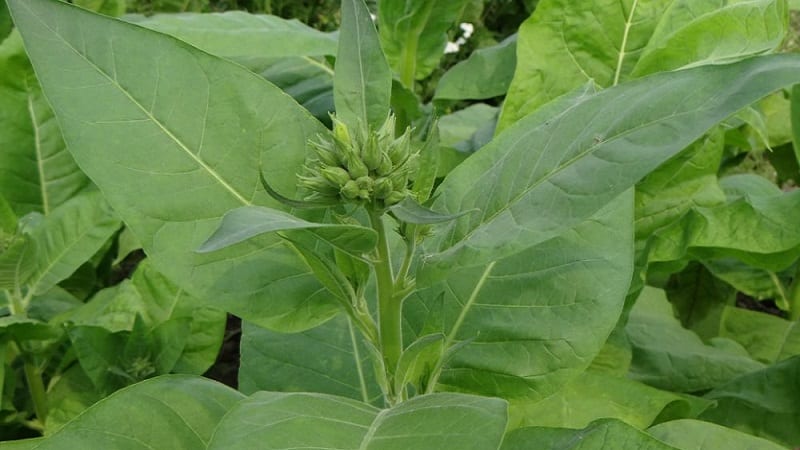
Air drying of the sheet is used. You can smoke tobacco immediately after drying by removing the central vein. To fully develop the taste and improve the smoking properties, the tobacco is aged from six months to a year.
Has a strong protein flavor in the smoke. It is best used in mixtures with Virginia.
Read also:
What is asparagus, what does it look like and how is it used?
The benefits of pickled asparagus and how to prepare it
What is chard, how to eat it correctly and what are its benefits
Dubek
This variety belongs to the aromatic varieties (they are also called oriental or eastern). The plant is drought-resistant, up to 80 cm high, with small, up to 20 cm, sessile dense leaves with a thin vein.
The aromatic properties are revealed only when grown in dry climates and sandy soils. Therefore, Dubek is most often cultivated in the south of Crimea. After harvesting, the leaves are dried in the sun. When exposed to sunlight, the natural aroma is fixed. This tobacco can be dried as a whole bush.
Dubek does not require fermentation. Once properly dried, it can be smoked directly or added to blends. However, the leaves acquire their best aroma after a year of aging.
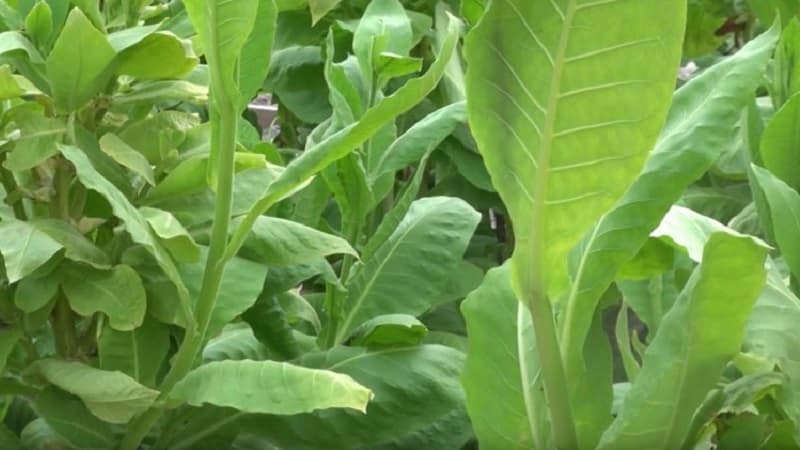
Samsun
Another representative of oriental tobaccos. The homeland of the variety is Türkiye. Due to its early ripeness, it is also successfully grown in Russia (in the North Caucasus).
The bush reaches a height of 100–150 cm. The leaves are petiolate, dark green in color with a fine elastic texture. The vein is almost invisible.
Features an original spicy taste and aroma due to the large number of essential oils. Compared to other varieties of the oriental group, the nicotine content is increased, so it can be used independently.The smoldering of tobacco is slow and even, thanks to which Samsun has become an indispensable component of hookah and pipe mixtures.
For processing use solar drying, fermentation is not necessary.
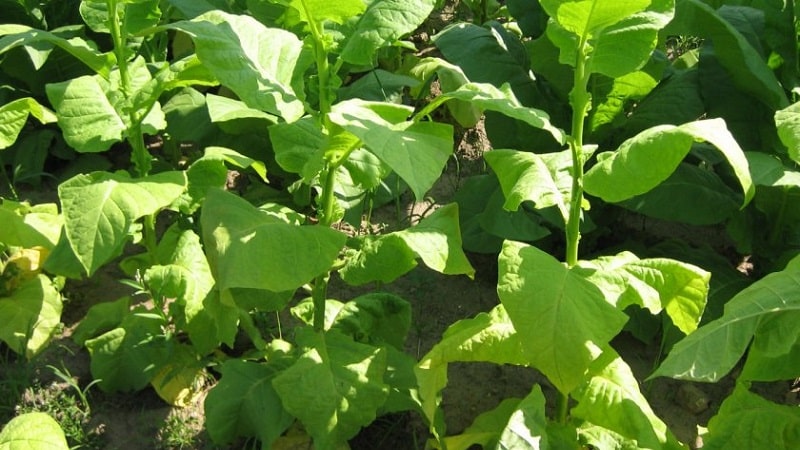
Anniversary New 142
An improved version of the famous Yubileiny 142 variety in the USSR. Nicotine content is reduced to 2%, resistance to diseases is increased.
The bush grows up to 2 m in height. The leaves are large, petiolate, light green in color. From planting to the first breaking of a leaf, an average of 80 days pass. After air drying, aromatic light brown raw materials are obtained, which can be smoked without fermentation.
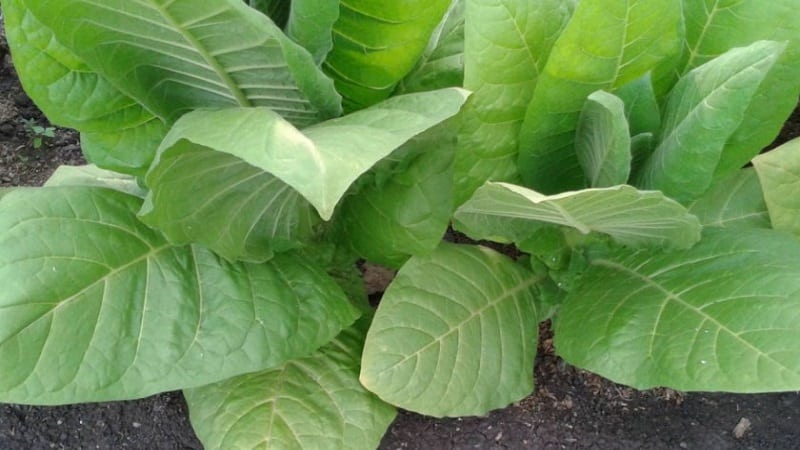
Conclusion
Fermentation is a complex set of chemical reactions that occur in the tobacco leaf. This operation improves the smoking and technological properties of the raw material.
The process starts when the temperature rises and occurs under pressure. A distinction is made between fermentation in pylons under the own weight of the leaves and special types of processing under pressure (Cavendish and Perique). The technology is labor-intensive and requires experience. However, beginners do not need to despair, because there are varieties that do not require fermentation.